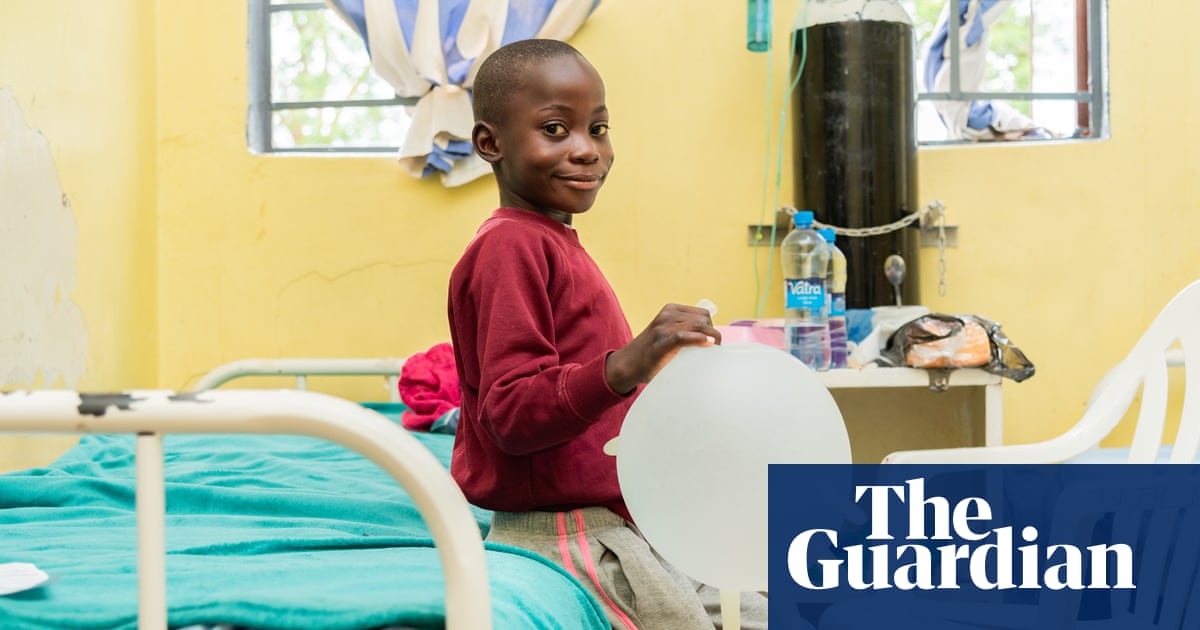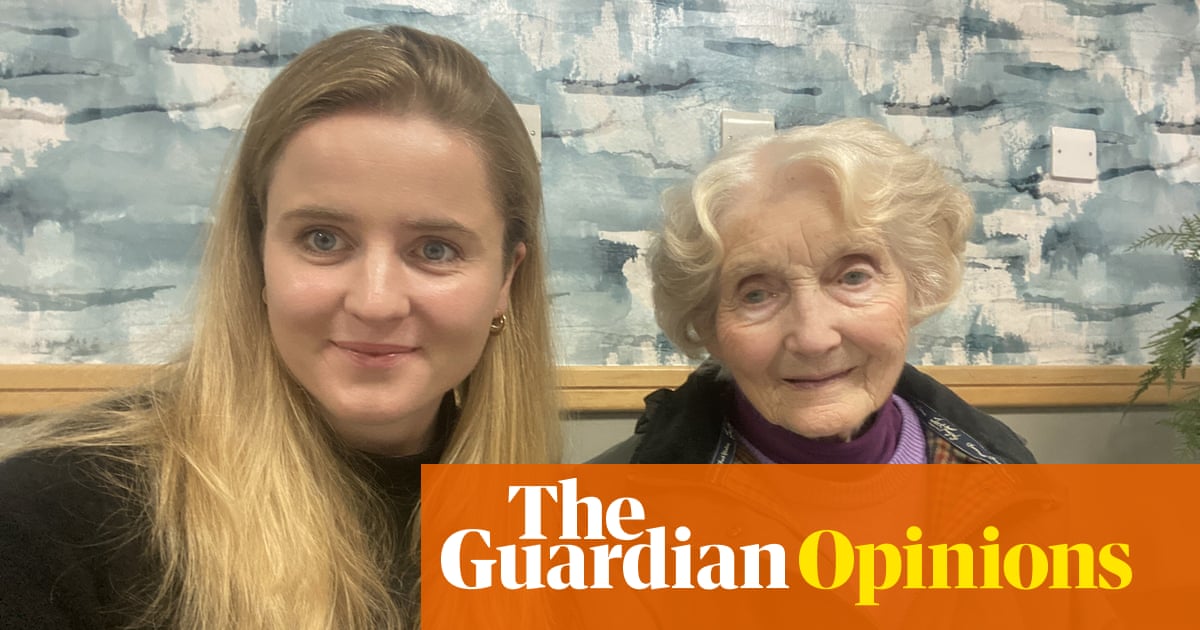
Eight-year-old Emmanuel Muwowo sits quietly on his hospital bed clutching a blue plastic figurine in one hand. His other hand is fitted with a cannula delivering dextrose saline fluid for rehydration following a stroke four days earlier, the fifth in his short life.
The stroke has affected his movement and speech but he smiles when asked what he likes doing and whispers: “I like playing with my friends.”
Emmanuel seems to have found the only toy in the room; sitting on the bed opposite him, Desmond Muyenga, who is also eight, plays with an inflated surgical glove, throwing it into the air like a strange pale balloon.
Like 90% of the children on the 36-bed haematology ward at UTH Children’s Hospital in Lusaka, Zambia, Emmanuel and Desmond have sickle cell disease and face a lifetime of health complications.
The inherited blood disorder affects haemoglobin, leading to poor oxygen levels and crescent-shaped red blood cells that can block blood vessels, causing extreme pain in the back, chest, hands and feet, as well as strokes. People with sickle cell are also more susceptible to bacterial infections and severe malaria.
Two-thirds of the world’s sickle cell cases are in Africa, making it the most prevalent genetically acquired disease in the region. In Zambia, 20-25% of the population carry the sickle cell gene and 1-2% of babies are born with the disease. About 50% of affected children will die before they reach five, usually from infection or severe anaemia.
However, despite its prevalence and the government’s recognition of the burden of the disease on families and the health system, in Zambia sickle cell is little understood and reactions are marred by stigma. If both parents carry the gene, they have a 50% chance of having a child with the disease, but the majority of carriers in Zambia, as in other African countries, are unaware of their status.
“Most of the parents have no idea,” says Violet Nyirenda, the nurse in charge of the haematology ward. “They don’t get tested before they get married so with that comes a lot of confusion when they realise [their child has sickle cell]. They wonder where it comes from and it’s even worse if you have a husband who isn’t supportive.”
Anger and denial around a diagnosis can strain relationships and fear of their marriage breaking down can prompt some mothers to take their children out of hospital before they are fully recovered, says Nyirenda. “Mothers want to go home, at the expense of the child.”
But none of the mothers in the ward today are leaving early. They sit and sleep on plastic chairs next to their children’s beds, exhausted and anxious.
“I just grab 15 minutes’ rest in the afternoon,” says Bertha Nanyinda, 30, who says she hasn’t slept properly since her eight-year-old daughter, Jemima, was admitted two weeks ago. As Jemima sleeps, wiped out by the morphine she’s been given, Nanyinda tries to entertain her other daughter, 14-month-old Janet.
Paying for medication is another challenge for parents, especially when some mothers have to give up work to look after poorly children. Most sickle cell patients need daily treatment, including hydroxyurea to reduce anaemia, and antibiotic and malaria prophylactics to prevent infection.
“Hydroxyurea is the most important,” says Emmanuel’s mother, Mercy Nkhoma, 43. “He has to take it every day but it’s a big challenge; sometimes you don’t have the money for the drugs. But if he doesn’t have it he can have a deadly stroke.”
Alice Katebe, 30, is a baker who struggles to balance being self-employed with looking after two daughters with sickle cell. She’s here with three-year-old Esnelly, who was recently discharged after spending a month in hospital. “It’s very difficult balancing my business when one [of them] is sick,” she says. Esnelly stands close to her, clutching a kwacha banknote in her hand. “She wants an ice-cream,” says Katebe.
For most children on the ward missing out on everyday pleasures like ice-cream and playing with friends is the hardest part of living with sickle cell disease. Fifteen-year-old James Banda has been admitted for the fifth time this year. He is passionate about football and lies on the bed in a Real Madrid shirt playing the game on his phone.
Worse than being unable to join in activities with others his age, he says, is being ostracised by them. “People laugh at you; they mock you and say you are sick,” he says. He wants to be a doctor when he’s older, to “help people like me”, but he also worries no one will want to marry him if they find out he has sickle cell.
In some ways the children who come through the ward, which treats more paediatric sickle cell patients than any other health facility in Zambia, are luckier than those living outside the capital. Most were diagnosed at a young age – usually after their parents noticed swelling in their hands and feet – and are now getting the treatment they need. A chart pinned to the wall of the nurses’ office shows that of the 397 admissions in the second quarter of 2023, there were just seven deaths.
In more rural areas, parents might keep a seriously ill child at home, unaware of the cause of the illness, or unable to afford to travel to a health centre. “When a child is ‘in crisis’, mothers will say they didn’t have money to bring them to the hospital or they didn’t know [how poorly they were] and come when it’s too late. It’s really heartbreaking,” says Nyirenda.
Lack of awareness among the general population is one reason Dr Catherine Chunda-Liyoka, the consultant in charge of paediatric haematology at UTH, is overseeing a newborn screening pilot. The programme was introduced to UTH and two hospitals in Ndola, a city in Copperbelt province, in 2021, and involves nurses visiting maternity wards and immunisation clinics to take blood samples from babies. Those identified with sickle cell are immediately put on prophylactic medication, and mothers are taught to look out for warning signs such as a swollen spleen, which can lead to severe anaemia and shock.
The pilot is not without its challenges – the numbers are not as high as Chunda-Liyoka would like: about 25% of babies are screened at UTH, and mothers of newborns are even more reluctant to accept that their baby has a life-threatening illness.
“There is a lot of denial because this is a baby who seems well. [The parents ask:] ‘How can this child have this disease which they know to be a deadly?’ First, they deny it; then they give up [on treatment],” says Chunda-Liyoka.
Nevertheless, initial results suggest that early detection saves lives. Among the cohort of babies screened since 2021, Chunda-Liyoka is aware of just one death, which was a result of the parents not bringing their child back for treatment.
The five-year programme, funded by American Society of Haemotology in seven African countries including Nigeria – the country with the highest global population of sickle cell sufferers – aims to address the dearth of data on the scale of the disease, and illustrate the cost-effectiveness of early screening.
“We are trying to get the minister of health to formulate and endorse a national sickle cell policy with a dedicated budget to allocate to screening, special care, specific antibiotics, malaria prophylactics,” says Chunda-Liyoka.
She would also like to see a programme to raise public awareness. “We need to do a lot of sensitisation; we need talk to the communities about sickle cell; we need messages on TV and radio so that people realise that a child can look well and yet have sickle cell.
“Carriers also need to know they are carriers – if we can empower people, they will insist on knowing the status of any future partner.”
Back on the ward, James is in severe pain. He lies on his stomach crying out, as his mother rubs his back and legs. He cannot walk and a nurse carries him out of the ward on her back for a pain-relief injection.












